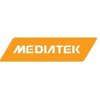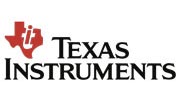Filter interviews by
MediaTek India Technology Engineer Interview Questions and Answers
MediaTek India Technology Engineer Interview Experiences
1 interview found
I applied via Campus Placement and was interviewed in Dec 2016. There was 1 interview round.
Interview Questionnaire
2 Questions
- Q1. Differences between TDMA,CDMA,WCDMA,OFDM
- Ans.
TDMA, CDMA, WCDMA, and OFDM are different multiple access techniques used in communication systems.
TDMA (Time Division Multiple Access) divides the available frequency into time slots.
CDMA (Code Division Multiple Access) uses unique codes to differentiate between users.
WCDMA (Wideband Code Division Multiple Access) is an advanced version of CDMA.
OFDM (Orthogonal Frequency Division Multiplexing) divides the available fr...
- Q2. How to detect and correct burst errors
- Ans.
Burst errors can be detected and corrected using error detection and correction codes.
Use error detection codes like CRC (Cyclic Redundancy Check) to detect burst errors
Use error correction codes like Reed-Solomon codes to correct burst errors
Re-transmit the data if the error cannot be corrected
Implement error detection and correction algorithms in the communication protocol or data storage system
Interview Preparation Tips
Skills evaluated in this interview
Top trending discussions






Interview questions from similar companies

I appeared for an interview before Jun 2016.
Interview Preparation Tips
Experience: Basic questions, testing normal knowledge
Total Questions: 50
Round: Technical Interview
Experience: 20 minutes, 5 questions ? Scheduling, real-time OS, and file system based questions ? Asked some in depth questions about file-handling in Linux ? C++ - IBM site tutorials, C-FAQ for C coding tutorials ? One puzzle, regarding number of rectangles on a chessboard, and some more typical questions asked in technical interviews
Round: HR Interview
Experience: Family and educational background ? Tell me about yourself ? Went a little in-depth into Linux. ? Main concern: will you join or not
Tips: Over all preparation in C, DSP course, OS and course in networking helps. ? Also, for HR interview, know about the company, PPT and website.

Interview Questionnaire
16 Questions
- Q1. Explain the difference between Moore and Mealy state models
- Ans.
Moore state model outputs depend only on the current state, while Mealy state model outputs depend on both current state and inputs.
Moore model: output is a function of current state only
Mealy model: output is a function of current state and inputs
Moore model has a separate output function, while Mealy model combines output and state transition functions
Example: vending machine can be modeled using Mealy model as outpu...
- Q2. Draw the state diagram and the clocked D-flipflop circuit for a 0110 sequence detector
- Ans.
State diagram and clocked D-flipflop circuit for a 0110 sequence detector.
The state diagram will have four states: S0, S1, S2, and S3.
The circuit will have four D-flipflops, one for each state.
The output of the circuit will be high when the sequence 0110 is detected.
The clock signal will be used to synchronize the flipflops.
The state diagram and circuit can be designed using software like Quartus or Xilinx.
- Q3. What is parity and how is it used? Draw the circuit diagram for a parity checker
- Ans.
Parity is a method of error detection in digital communication. It involves adding an extra bit to a data stream to ensure even or odd number of 1s.
Parity is used to detect errors in data transmission.
It involves adding a parity bit to a data stream.
The parity bit is set to 1 or 0 depending on whether the number of 1s in the data stream is even or odd.
If an error occurs during transmission, the parity bit will be incor...
- Q4. Design a memory organization given the size and block units
- Ans.
Designing a memory organization based on size and block units.
Determine the size of the memory and the size of each block unit
Choose a suitable memory organization scheme such as direct mapping, associative mapping, or set-associative mapping
Implement the chosen scheme and test for efficiency and accuracy
- Q5. Draw the circuit diagram for a random number generator
- Ans.
A random number generator circuit diagram can be created using a noise source and an amplifier.
Use a noise source such as a Zener diode or a reverse-biased transistor
Amplify the noise signal using an amplifier circuit
Use a comparator to convert the analog signal to a digital signal
Add a clock circuit to control the output frequency
- Q6. What is a Schmitt trigger/inverter?
- Ans.
A Schmitt trigger/inverter is a circuit that converts a noisy input signal into a clean digital output signal.
It has two threshold voltage levels: a high threshold and a low threshold
The output of the circuit changes state only when the input voltage crosses one of the threshold levels
It is commonly used in digital circuits to clean up noisy signals and to provide hysteresis
Examples include debouncing switches, signal
- Q7. Arrange the inputs to AND gates so that power usage is optimized/delay is optimized
- Ans.
To optimize power usage/delay in AND gates, arrange inputs based on their capacitance and resistance.
Arrange inputs with lower capacitance and resistance closer to the gate
Inputs with higher capacitance and resistance should be placed farther away
Consider the layout of the circuit and the routing of the wires
Simulation tools can be used to determine optimal input arrangement
- Q8. Draw the CMOS circuit for a given logic equation and do the corresponding W/L sizing
- Ans.
Answering a question on drawing CMOS circuit and W/L sizing for a given logic equation.
Understand the logic equation and its truth table
Use CMOS inverter and NAND gates to implement the logic
Size the transistors based on their role in the circuit
Check the circuit for correct functionality
Examples: AND gate, OR gate, XOR gate
- Q9. Draw a circuit for a set of logic equations using PLA
- Ans.
A circuit for a set of logic equations using PLA
PLA stands for Programmable Logic Array
PLA is a type of digital circuit used to implement combinational logic circuits
The circuit consists of an AND array and an OR array
Inputs are fed into the AND array and the outputs are fed into the OR array
Example: A PLA circuit for a 2-input XOR gate would have 2 inputs, 2 AND gates, and 1 OR gate
- Q10. Draw and talk about a basic SRAM cell
- Ans.
An SRAM cell is a type of memory cell that stores a single bit of data using two cross-coupled inverters.
Consists of two inverters connected in a feedback loop
Has two stable states, representing 0 and 1
Uses two access transistors to read and write data
Commonly used in cache memory and microprocessors
- Q11. Given the delays for gates and wires, draw output waveforms for the given logic circuit
- Ans.
Draw output waveforms for a logic circuit given delays for gates and wires.
Identify the logic gates and their delays
Determine the propagation delay for each wire
Use the delays to calculate the output waveform
Draw the waveform using a timing diagram
- Q12. What is Min-Cut placement algorithm? Given some block sizes, use the algorithm to place them on a given chip area
- Ans.
Min-Cut placement algorithm is used to place blocks on a given chip area.
Min-Cut algorithm partitions the chip into two parts and minimizes the cut between them
It is a graph-based algorithm that uses a flow network to represent the chip and its blocks
The algorithm iteratively partitions the network until all blocks are placed
Example: Placing logic gates on a microprocessor chip
- Q13. Given a clock waveform of frequency f, design a circuit to get an output of frequency f/3
- Ans.
Design a circuit to get an output of frequency f/3 from a clock waveform of frequency f.
Use a counter to divide the frequency by 3
Implement a flip-flop to toggle the output
Use logic gates to control the counter and flip-flop
- Q14. Explain a little about your M.Tech. project
- Ans.
My M.Tech. project was focused on developing a machine learning algorithm for predicting stock prices.
Used historical stock data to train the algorithm
Implemented various machine learning techniques such as regression and neural networks
Achieved an accuracy of 80% in predicting stock prices
Explored the impact of news articles on stock prices
- Q15. What do you know about Qualcomm?
- Ans.
Qualcomm is a multinational semiconductor and telecommunications equipment company.
Founded in 1985 in San Diego, California
Specializes in designing and manufacturing wireless telecommunications products and services
Known for their Snapdragon processors used in smartphones and other mobile devices
Also involved in developing 5G technology and Internet of Things (IoT) devices
Has partnerships with various companies includi
- Q16. Have you ever worked in groups? What kind of work was it?
- Ans.
Yes, I have worked in groups on various projects.
I have worked in groups during my college projects.
I have also worked in groups in my previous job on a software development project.
In both cases, we had to collaborate and divide tasks among team members.
We had regular meetings to discuss progress and address any issues.
I found that working in a group allowed us to leverage each other's strengths and produce better res
Interview Preparation Tips
Experience: The Quant and Programming sections were long but fairly easy; I pretty much sailed through them. However, the core EC section was really lengthy and not so easy, and also had negative marking. I was able to complete the first 2 sections completely, and around 11/20 questions in the core section.
The Quant section touched basic topics like probability, algebra and simple geometry. Programming questions were quite syntax-based, rather than algorithm-based. In the core section, the focus was on device physics and digital electronics, including combinational/sequential circuits and microprocessors.
Tips: 1. Practice Quantitative sections. A LOT. Speed is of the essence in these sections, because almost everyone is on the same level as you are where mathematics is concerned.
2. Know the basic syntax of C++, that is the most common language you're tested on in the Programming section. Also know simple data structures and complexity calculations.
3. The core section is the most important one, so make sure your knowledge is sound and practice solving digital circuits as fast as you can.
4. The EC section is generally quite lengthy, so quickly flip through the questions once and then figure out what questions you can do for sure, finish those and then start on the remaining ones. DO NOT STAY ON ONE QUESTION FOR TOO LONG, because you won't even be able to haphazardly guess on the other questions because of the negative marking.
Duration: 60 minutes
Total Questions: 50
Round: Technical Interview
Experience: I had only one round of technical interview. The interviewer was a person who'd worked at Qualcomm for around 5 years, as a Senior Engineer. The questions were not too tough, but challenging enough that you had to be quick at circuit evaluations. I wasn't able to solve all the questions completely, but talking aloud really helped, the interviewer himself would pass on hints or correct me sometimes if I went too far off on a tangent.
All in all, the interview lasted for about 45 minutes and was tiring but really fun if you like EC. For the first time, I realized that I actually knew electronics after studying it for 4 years! ;)
Tips: 1. Many people must have said this to you, but I'll say it again: Don't be too nervous. The questions are asked in such a way that you will definitely not be able to do all of them, so don't freak if you miss something here and there, they know it too!
2. Make sure you have the basics of logic gates, sequential design and digital VLSI circuits down pat when you're preparing for the interview. These are the main areas they are looking for in the VLSI Electronics interviews. Apart from these, a knowledge of Computer Architecture and basic VLSI CAD wouldnn't hurt!
3. I can't emphasize this enough: Talk out when thinking. It is very important for the interviewers to know what kind of technical logic you use when working out problems, and most often they start talking with you, which leads to an insightful discussion rather than a Q&A session.
4. Make sure your interest in the field also comes across; as far as I saw, they're looking for people who actually like EC and will be able to work hours together without getting bored of it (Well, not too much :P)
Round: HR Interview
Experience: The HR interview wasn't really an interview; it was more of a 15-minute discussion with an HR person. He was basically looking to see whather I would be able to fit into a team-oriented work environment and add something to it, that's all. Apart from that, there was mostly a discussion on the package breakdown, and the kind of work and teams we could be involved with in Qualcomm.
Tips: 1. Know something about Qualcomm, so that you're able to answer the first question they'll mostly ask.
2. This round is set to get to know you, so clear all your doubts and ask as many questions as you want.
3. Once again, try to express your interest in working in the field of electronics; if your passion shows, this round is pretty much cleared!
General Tips: 1. Be sure you're interested in EC before applying to Qualcomm for the VLSI profile.
2. For the test, speed is of the essence; practice solving different question sets in as less time as possible.
3. For the interview(s), don't be nervous, talk aloud, and have a sound technical base to build upon.
Skills: Digital Circuits, VLSI Technology, Low-Power Electronics, EC Device Physics, VLSI Circuit Design, Basic Programming
College Name: Indian Institute of Technology Kharagpur
Motivation: I've always been interested in Electronics, ever since I studied the 8085 Microprocessor in the 12th Grade. Even when I joined IITKGP, I changed my Department to Electronics after my first year, because that's what I wanted to study!
Circuit design is one of the most interesting and challenging fields in today's electronics field, and I would love to see what happens, and be a part of it. Especially since right now we're on the verge of a big change - we're close to moving away from silicon-based designs; what happens next?
Skills evaluated in this interview

I applied via Referral and was interviewed before Jan 2021. There were 5 interview rounds.
Interview Questionnaire
2 Questions
- Q1. Basic data structures questions from bit manipulation, trees, arrays, string
- Q2. Questions related to previous company work.
Interview Preparation Tips

I applied via LinkedIn and was interviewed before Sep 2022. There was 1 interview round.
(2 Questions)
- Q1. General question on WLAN, bluetooth
- Q2. WLAN Connection procedure
- Ans.
WLAN connection procedure involves scanning for available networks, selecting a network, entering the password, and connecting to the network.
Scan for available networks
Select a network to connect to
Enter the password for the selected network
Establish connection to the network
Skills evaluated in this interview

I applied via Qualcomm and was interviewed before Feb 2023. There were 2 interview rounds.
(5 Questions)
- Q1. Questions on OFDM, MIMO
- Q2. Questions on 5G stack, PHY layer
- Q3. Power and Callflow
- Q4. RF configurations and uses
- Ans.
RF configurations and uses
RF stands for Radio Frequency
RF configurations refer to the different ways in which radio frequency signals can be set up and utilized
RF is commonly used in wireless communication systems, such as Wi-Fi, Bluetooth, and cellular networks
RF configurations can include various parameters like frequency, modulation, bandwidth, and power levels
Different RF configurations are used for different appli...
- Q5. Noise and interference issues, debugging skills
2 python questions on arrays and strings

I appeared for an interview before Feb 2023.
Practice on hackerrank, they send hackerrank link for screening round.
(1 Question)
- Q1. C, os, embedded questions
(1 Question)
- Q1. C, data structures,os
(1 Question)
- Q1. Previous jobs, salary discussion, relocation
Interview Preparation Tips

I applied via Referral and was interviewed in Sep 2023. There were 4 interview rounds.
(2 Questions)
- Q1. Find the length of longest common subsequence in given strings.
- Ans.
The length of the longest common subsequence in given strings is found using dynamic programming.
Use dynamic programming to find the length of the longest common subsequence.
Compare characters of the strings and build a matrix to store the lengths of common subsequences.
Traverse the matrix to find the length of the longest common subsequence.
- Q2. A basic DFS based graph question.
Write the algorithm for topological sorting.
(2 Questions)
- Q1. Basic system design questions.
- Q2. Explain CAP theorem.
- Ans.
CAP theorem states that in a distributed system, it is impossible to simultaneously guarantee consistency, availability, and partition tolerance.
Consistency: All nodes in the system have the same data at the same time.
Availability: Every request gets a response, even if some nodes are down.
Partition Tolerance: The system continues to operate despite network partitions.
In a distributed system, you can only achieve two o...
(1 Question)
- Q1. Explain your previous projects .
Skills evaluated in this interview

(2 Questions)
- Q1. What is VLSI design cycle ?
- Ans.
VLSI design cycle is the process of creating integrated circuits by going through various stages from design to fabrication.
VLSI design cycle involves stages like specification, design, verification, synthesis, and fabrication.
It starts with defining the requirements and specifications of the integrated circuit.
Design phase includes logic design, circuit design, and physical design.
Verification ensures that the design ...
- Q2. FIFO Pipeline depth calculation
(1 Question)
- Q1. Verilog code debug question
Interview Preparation Tips
Skills evaluated in this interview

I applied via Approached by Company and was interviewed in Feb 2022. There was 1 interview round.
(1 Question)
- Q1. Modem related like Tx power LNA camping issues debug Few data scenarios
Interview Preparation Tips
MediaTek India Technology Interview FAQs
Tell us how to improve this page.
MediaTek India Technology Interviews By Designations
- MediaTek India Technology Software Engineer Interview Questions
- MediaTek India Technology Senior Software Engineer Interview Questions
- MediaTek India Technology QA Engineer Interview Questions
- MediaTek India Technology Engineer Interview Questions
- MediaTek India Technology Technical Lead Interview Questions
- MediaTek India Technology Associate Engineer Interview Questions
- MediaTek India Technology Software Development Engineer Interview Questions
- MediaTek India Technology Design Engineer Interview Questions
- Show more
Interview Questions for Popular Designations
- Production Planning Manager Interview Questions
- Operation Incharge Interview Questions
- Plant Supervisor Interview Questions
- Senior Manager QA Interview Questions
- Tour Manager Interview Questions
- Associate Managing Consultant Interview Questions
- Operations Controller Interview Questions
- Quality Head Interview Questions
- Show more
Interview Questions from Similar Companies
Fast track your campus placements
MediaTek India Technology Engineer Reviews and Ratings
based on 3 reviews
Rating in categories
|
Senior Engineer
124
salaries
| ₹11.7 L/yr - ₹31 L/yr |
|
Staff Engineer
85
salaries
| ₹16.5 L/yr - ₹44 L/yr |
|
Senior Software Engineer
55
salaries
| ₹9.4 L/yr - ₹28 L/yr |
|
Software Engineer
54
salaries
| ₹6 L/yr - ₹22 L/yr |
|
Technical Manager
38
salaries
| ₹21 L/yr - ₹61 L/yr |

Qualcomm

TDK India Private Limited

Molex

Applied Materials
- Home >
- Interviews >
- MediaTek India Technology Interview Questions >
- MediaTek India Technology Engineer Interview Questions

















